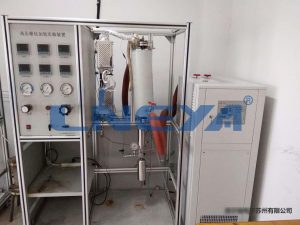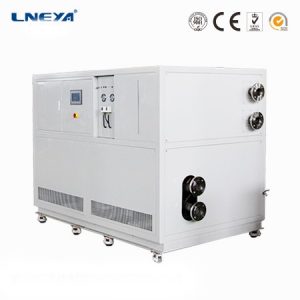Recommendations for the use of integrated chip test equipment in the test process
From the perspective of the entire semiconductor industry, semiconductors can be divided into R & D, production, and application stages. At different stages, the role of testing is different. Control of test equipment, including test machines, probe stations, sorting machines, etc.
Used in different processes and under different working conditions, integrated chip test instruments need to pay attention to some use knowledge when used.
Temperature changes on the chip can significantly affect chip power consumption, speed, and reliability. In particular, the leakage power has an exponential relationship with temperature. If it is not handled properly, it will cause thermal runaway. Performance factors such as voltage drop and clock skew are also particularly susceptible to changes in space temperature and cause performance degradation. Integrated chip test instruments also play an important role in the degradation of device performance, which is caused by phenomena such as bias temperature instability, which is more obvious in analog circuits. The cooling efficiency of the package and related cooling systems is reduced due to hot spots on the top. In many cases, on-chip thermal sensors need to be placed correctly in high-temperature areas.
As soon as possible, analysis and detection and elimination of hotspots in the design should be performed through integrated chip test equipment. The physical layout and power consumption status should be understood as early as the underlying planning stage. This is also a good time for early thermal planning. Full consideration of packaging and metallization effects during operation. Ignoring these structures and using power or power density plots to estimate temperature can lead to inaccurate power estimates and other temperature-sensitive analysis results.
Integrated chip test equipment carefully examines the thermal effects during each iterative design phase that may change the chip’s power distribution. Thermal analysis performed in some important operating modes of the device is usually sufficient to provide feedback on hot spots and other concerns. Integrated chip test equipment makes full use of dispersed temperature information in clock trees and critical network designs that are sensitive to on-chip changes. Timing and signal integrity analysis will also benefit from accurate temperature and voltage drop information. If the sensors are placed incorrectly, they may not capture the temperature of the chip, which may lead to overly optimistic feedback results.
Therefore, when using it, you need to pay attention to the above common sense and pay more attention to maintenance, so that the integrated chip test equipment can be maintained in an efficient and stable state.
(This article source network, if there is any infringement, please contact delete, thank you.)
Related recommendations
-
The Advantages Of The Industrial Chiller For Cascade Cryogenic Refrigeration System
1292Cascade cryogenic refrigeration system is a low-temperature refrigeration system which uses more than two refrigerants and combines them with heat exchangers (condenser evaporators) in more than two systems. For binary cascade refrigeration system...
View details -
Advantages of LNEYA heat transfer oil heater
991The heat transfer oil electric heater is a new type of thermal energy conversion device that uses electricity as the energy source and heat transfer oil as the heat transfer medium. It can provide circulating heat transfer oil of circulating pump ...
View details -
The necessity of temperature heating and cooling cycle in the process of catalytic hydrogenation
1085In recent years, with the rising price of oil, the demand for benzene obtained from coking benzene has increased, coupled with the country's increasing emphasis on environmental protection, the widespread application of coking benzene hydrogenatio...
View details -
Fully closed cycle high viscosity fluid refrigeration heating flow control system
913Application:1. The tested object is connected to a test platform adapter.2. The internal parts of the parts are cooled, heated, flow controlled, and pressure controlled by various lubricating oils, hydraulic oils, aviation fuel, fuel oil, and co...
View details
 LNEYA Industrial Chillers Manufacturer Supplier
LNEYA Industrial Chillers Manufacturer Supplier













